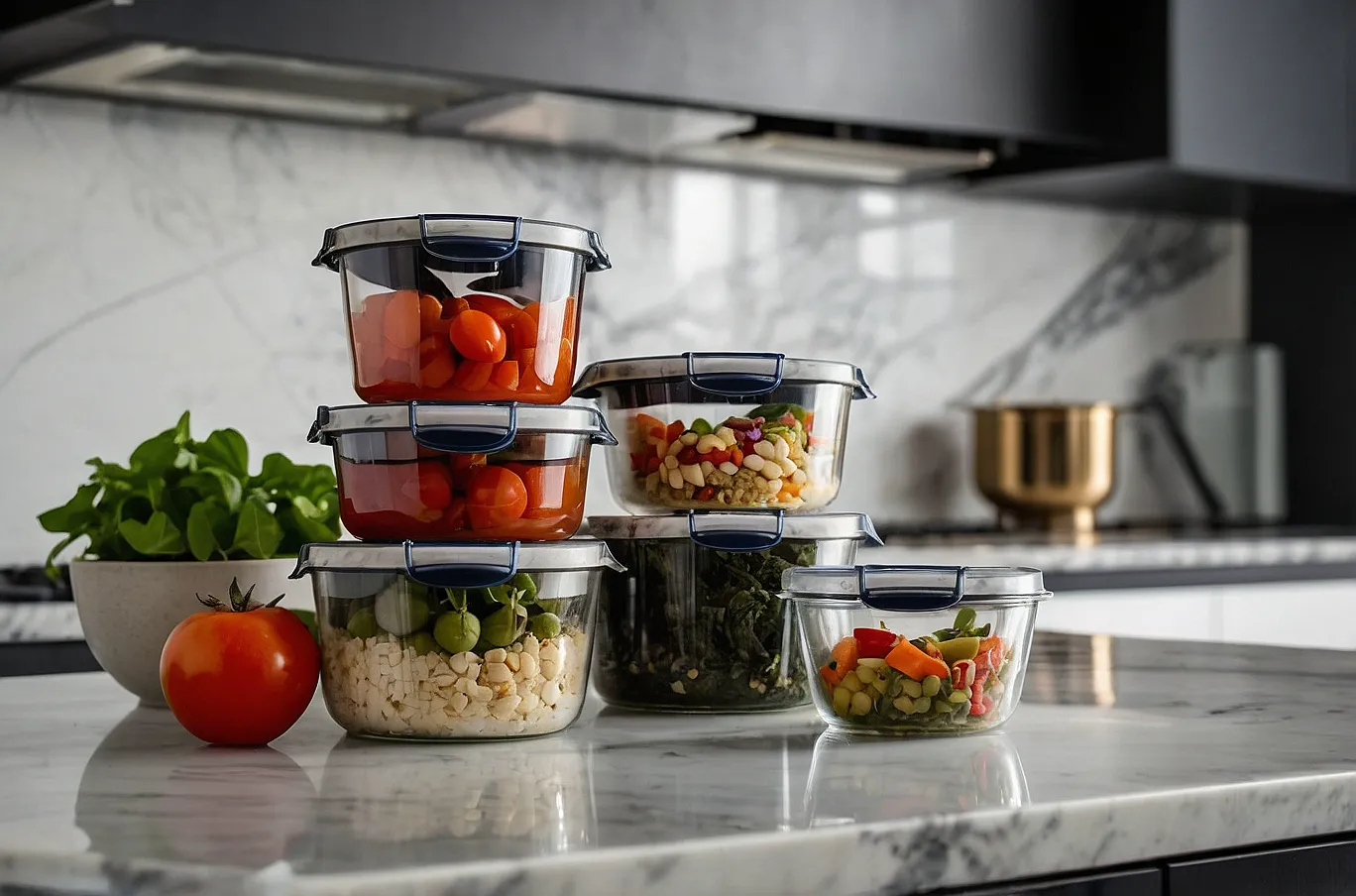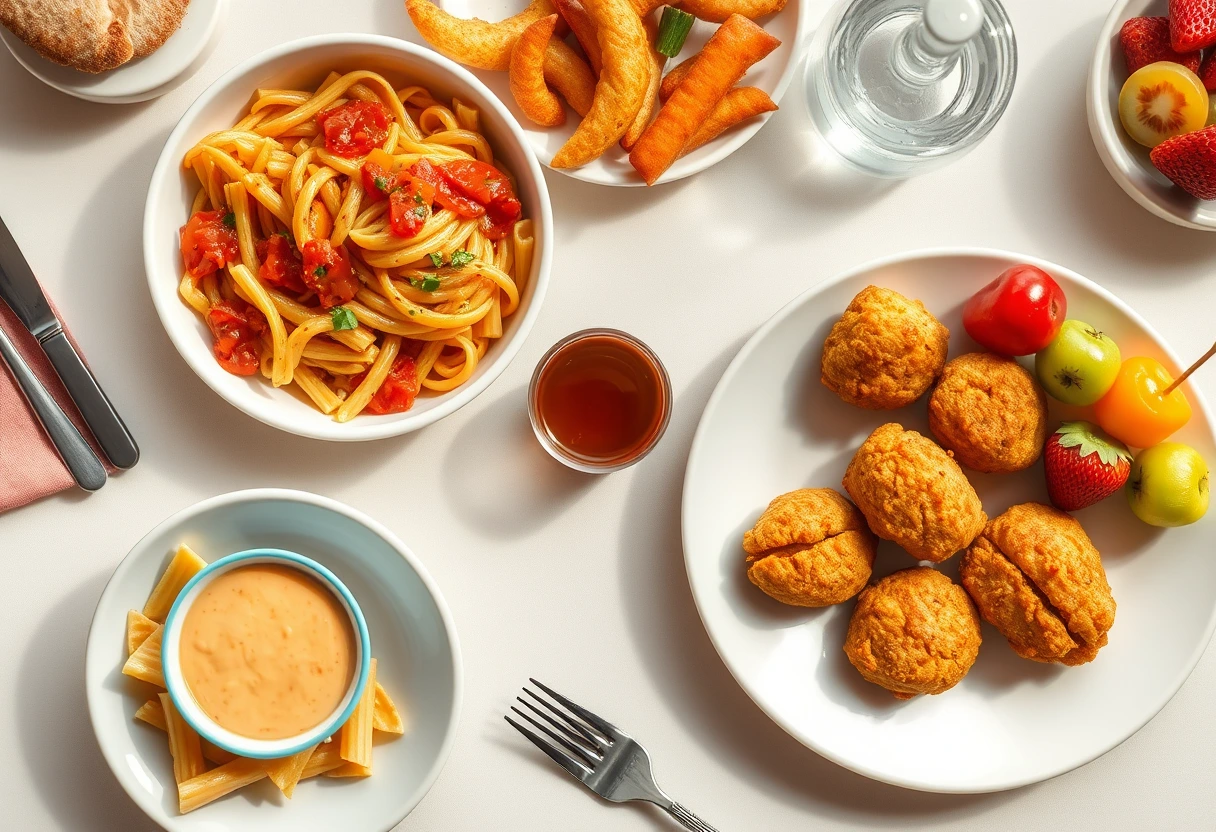 Other
OtherHealthy Dishes for Picky Eaters: Your Ultimate Guide
As a busy mother, you juggle countless responsibilities, and ensuring your little ones eat well can often feel like an Olympic sport. The daily struggle to serve up nutritious meals that don't end up on the floor or met with a resounding "Eww!" is a universal parenting challenge. You want the best for your kids, and that means offering healthy dishes for picky eaters that are both appealing and packed with essential nutrients. This guide is designed to empower you with practical strategies, delicious recipes, and a renewed sense of confidence in the kitchen, turning mealtime battles into moments of culinary delight. Let's transform your family's food journey into a positive and nourishing experience.
The Picky Eater Predicament: Understanding the Challenge
Every parent knows the frustration of preparing a wholesome meal, only for it to be rejected by a tiny, discerning critic. This common scenario isn't just about food; it's about understanding the complex interplay of developmental stages, sensory preferences, and learned behaviors that contribute to selective eating. For young, busy mothers, the added pressure of time constraints and the desire to provide a balanced diet can amplify this challenge.
Why Do Kids Become Picky Eaters?
Picky eating often stems from several factors. Toddlers, for instance, are naturally neophobic, meaning they have an innate fear of new things, including new foods. This is an evolutionary survival mechanism. Sensory sensitivities also play a significant role; some children are highly sensitive to certain textures, smells, or flavors. A strong smell of broccoli or the mushy feel of cooked carrots can be genuine deterrents. Furthermore, a bid for independence often manifests at mealtime as children test boundaries and assert control over their environment. It’s not always about disliking the food, but about exercising autonomy.
The Impact on Busy Moms
For busy mothers, the picky eater predicament can lead to significant stress and guilt. There’s the worry about nutritional value – are they getting enough vitamins and minerals? Then there’s the sheer time drain of preparing multiple meals or dealing with food waste. The constant negotiation can be mentally exhausting, adding another layer to already demanding parenting challenges. This often leads to resorting to a limited menu of "safe" foods, which, while convenient, may not offer the diverse nutrient-dense ingredients crucial for growth and development. Finding effective meal prep solutions becomes paramount.
Strategic Approaches to Mealtime Harmony
Navigating the picky eater landscape requires more than just new recipes; it demands a strategic shift in your approach to mealtimes. By implementing consistent habits and fostering a positive environment, you can gradually expand your child’s palate and reduce mealtime stress, moving towards a balanced diet for the whole family.

Involve Them in the Process
One of the most effective ways to encourage food acceptance is to let children participate in the food journey. When kids help choose ingredients at the grocery store, wash vegetables, or stir a batter, they develop a sense of ownership and curiosity about the food. This involvement demystifies new foods and builds excitement. For example, letting them pick out a new, colorful vegetable to try can make them more likely to sample it. This simple act of culinary creativity fosters a connection to what they eat, transforming it from something forced into something they’ve contributed to.
The Power of Exposure and Repetition
Patience is key when introducing new foods. It can take 10-15 exposures for a child to accept a new taste. Don't give up after the first rejection! Offer small, non-pressured portions alongside familiar foods. The goal isn't immediate consumption, but gentle exposure. Continual, calm exposure helps desensitize them to the novelty and builds familiarity. Think of it as a long-term strategy to expand their flavor profiles. You're building a foundation for diverse tastes, one gentle introduction at a time.
Clever Kitchen Hacks for Sneaking in Nutrition
Sometimes, the direct approach fails, and that's where a little culinary cunning comes in. Incorporating nutrient-dense ingredients discreetly into beloved dishes can be a game-changer for ensuring your child gets the vitamins and minerals they need without even knowing it. These kitchen hacks are perfect for busy moms looking to maximize nutritional value without adding stress.
Puree Power: Vegetables in Disguise
Pureeing vegetables is an ultimate secret weapon for healthy dishes for picky eaters. Spinach, carrots, zucchini, butternut squash, and sweet potatoes can all be cooked until very soft, then blended into a smooth puree. This puree can then be stirred into pasta sauces, mac and cheese, soups, casseroles, muffins, or even pancake batter. The key is to ensure the puree is smooth and doesn't significantly alter the texture or color of the dish too much, especially initially. For instance, a small amount of carrot puree can add sweetness and beta-carotene to a tomato sauce without being detected. This method effectively boosts the nutritional content of familiar favorites.
Blending for Better Bites: Smoothies and Sauces
Smoothies are fantastic vehicles for packing in fruits, vegetables, and even some protein. Blend spinach or kale with fruits like berries, bananas, and a liquid base like milk or yogurt. The strong fruit flavors often mask the greens. Similarly, you can blend white beans or cauliflower into cheese sauces for added protein and fiber without changing the creamy texture. These tactics contribute significantly to a child's balanced diet and offer stress-free meal times. Think beyond traditional meals; these liquid and semi-liquid forms can be much more approachable for children with texture aversion.
Top Healthy Dishes for Picky Eaters: Recipes They’ll Love
Now for the fun part: delicious, easy-to-make recipes that are tried-and-true winners with even the most discerning palates. These kid-friendly healthy recipes are designed with both taste and nutrition in mind, making your meal prep journey much smoother and more enjoyable.

Sneaky Veggie Pasta Sauce
This sauce is a lifesaver for busy moms. It’s rich, flavorful, and packed with hidden vegetables. You can make a large batch and freeze portions for quick weeknight meals.
- Ingredients:
- 1 tbsp olive oil
- 1 onion, finely chopped
- 2 cloves garlic, minced
- 1 large zucchini, shredded or finely diced
- 2 carrots, shredded or finely diced
- 1 red bell pepper, finely diced
- 1 cup spinach, finely chopped or pureed
- 1 (28 oz) can crushed tomatoes
- 1 (15 oz) can tomato sauce
- 1/2 cup vegetable broth
- 1 tsp dried oregano
- 1/2 tsp dried basil
- Pinch of sugar (optional, to cut acidity)
- Salt and black pepper to taste
- Favorite pasta for serving
- Parmesan cheese for garnish (optional)
- Instructions:
- Heat olive oil in a large pot or Dutch oven over medium heat. Add onion and cook until softened, about 5 minutes. Add garlic and cook for another minute until fragrant.
- Add shredded zucchini, carrots, and diced bell pepper. Cook for 8-10 minutes, stirring occasionally, until vegetables are tender.
- Stir in chopped or pureed spinach until wilted.
- Pour in crushed tomatoes, tomato sauce, and vegetable broth. Add oregano, basil, and sugar (if using). Stir well.
- Bring the sauce to a simmer, then reduce heat to low, cover, and cook for at least 30 minutes (the longer, the better for flavors to meld).
- For an even smoother sauce, use an immersion blender to blend directly in the pot until desired consistency is reached.
- Season with salt and pepper to taste.
- Serve over cooked pasta with a sprinkle of Parmesan cheese, if desired.
Homemade Chicken & Veggie Nuggets
Forget the store-bought versions filled with unknowns. These homemade nuggets are crispy, delicious, and incorporate hidden veggies.
- Ingredients:
- 1 lb boneless, skinless chicken breast, cut into 1-inch pieces
- 1/2 cup cooked sweet potato or butternut squash puree
- 1/4 cup finely grated Parmesan cheese
- 1/2 tsp garlic powder
- 1/4 tsp onion powder
- Salt and black pepper to taste
- 1 cup whole wheat breadcrumbs
- 1/2 cup all-purpose flour
- 2 large eggs, beaten
- 2 tbsp olive oil (for baking) or oil for frying
- Instructions:
- Preheat oven to 400°F (200°C) if baking. Lightly grease a baking sheet or line with parchment paper.
- In a food processor, combine chicken pieces, sweet potato puree, Parmesan cheese, garlic powder, onion powder, salt, and pepper. Process until the mixture is finely ground and well combined, resembling a thick paste.
- Form the mixture into nugget shapes (about 1-inch thick).
- Set up a dredging station: place flour in one shallow dish, beaten eggs in a second, and breadcrumbs in a third.
- Dredge each nugget: first in flour (shake off excess), then in egg (let excess drip off), and finally coat thoroughly in breadcrumbs, gently pressing to adhere.
- Arrange nuggets on the prepared baking sheet. Drizzle lightly with olive oil.
- Bake for 15-20 minutes, flipping halfway through, until golden brown and cooked through. Alternatively, pan-fry in a shallow amount of oil until golden and cooked.
- Serve with a favorite dipping sauce.
Mini Quiches with Veggie Surprises
These mini quiches are perfect for breakfast, lunch, or even a snack. Their small size makes them approachable, and you can customize the fillings based on what your child might tolerate.
- Ingredients:
- 1 tbsp olive oil
- 1/4 cup finely chopped onion
- 1/2 cup finely chopped bell peppers (any color)
- 1/2 cup finely chopped zucchini or spinach
- 4 large eggs
- 1/2 cup milk (dairy or non-dairy)
- 1/4 cup shredded cheese (cheddar, mozzarella, or a blend)
- Salt and black pepper to taste
- 6 frozen mini phyllo shells or store-bought mini tart shells (or homemade pie crust cut into circles)
- Instructions:
- Preheat oven to 350°F (175°C). Lightly grease a mini muffin tin or arrange phyllo shells on a baking sheet.
- Heat olive oil in a small skillet over medium heat. Add onion and bell peppers, cooking until softened, about 5 minutes. Add zucchini or spinach and cook until tender and any moisture has evaporated. Let cool slightly.
- In a medium bowl, whisk together eggs, milk, shredded cheese, salt, and pepper.
- If using phyllo shells, place them on a baking sheet. If using a muffin tin, place a small piece of pie crust in each well.
- Divide the cooked vegetable mixture evenly among the shells/muffin wells.
- Pour the egg mixture over the vegetables, filling each shell/well about 3/4 full.
- Bake for 15-20 minutes, or until the egg is set and lightly golden.
- Let cool slightly before serving. These are great for meal prep and can be stored in the refrigerator for a few days.
Making Meal Prep Work for Picky Eaters
Meal prep is a busy mom’s best friend, and it’s especially beneficial when dealing with selective eaters. Having healthy dishes for picky eaters ready to go reduces stress, minimizes impulse decisions for less healthy options, and ensures that you always have nutritious choices on hand. Effective meal prep requires a bit of planning, but the time-saving strategies are invaluable.
Batch Cooking for Variety
Designate a few hours each week, perhaps on a Sunday, for batch cooking. This means preparing larger quantities of components that can be mixed and matched throughout the week. For example, cook a large batch of quinoa or brown rice, roast a big tray of mixed vegetables (some for pureeing, some for direct serving), and bake chicken breasts. Having these foundational elements ready makes assembling quick meals much easier. You can then quickly turn cooked chicken into wraps, shred it for quesadillas, or cube it for a quick pasta dish. This approach to meal prep allows for diverse culinary creativity without starting from scratch every night.
Freezing for Future Feasts
Many of the recipes mentioned, like the sneaky veggie pasta sauce, mini quiches, and chicken nuggets, freeze beautifully. Prepare double or triple batches and portion them into individual or family-sized servings for the freezer. Label everything clearly with the date and contents. On busy weeknights, simply pull out a portion, reheat, and you have a nutritious, kid-approved meal in minutes. This strategy is a true lifesaver for stress-free meal times, ensuring you always have wholesome meals at your fingertips.
Encouraging Independence and Positive Food Experiences
Beyond the recipes and sneaky tactics, fostering a positive relationship with food is paramount. Empowering your child at mealtime can significantly reduce resistance and build healthy eating habits that last a lifetime. This is about nurturing their food journey, not forcing it.

Offer Choices (Within Limits)
Allowing children to make choices gives them a sense of control without letting them dictate the entire menu. Instead of asking "What do you want for dinner?", offer "Would you like carrots or peas with your chicken tonight?" or "Do you want your pasta with the red sauce or plain?". This strategy empowers them while ensuring they still eat a balanced meal. This subtle shift can make a big difference in reducing mealtime power struggles, making the entire experience more pleasant for everyone.
Make it Fun and Engaging
Food doesn’t always have to be serious. Get creative! Use cookie cutters to make fun shapes out of sandwiches, cheese, or vegetables. Arrange food into faces or animals on the plate. Give new foods silly names. Serve dips with vegetables. Kids are more likely to try foods when they are presented in an engaging way. Remember, a positive food experience is about more than just the food itself; it's about the atmosphere and interaction around it. This is where you can truly blend nutritional value with fun.
When to Seek Professional Help
While the strategies above are highly effective for most cases of picky eating, there are instances where professional guidance might be beneficial. Recognizing these signs early can lead to timely intervention and support for both you and your child, ensuring their dietary needs are fully met.
Identifying Red Flags
Most picky eating is a normal phase, but some signs might indicate a deeper issue. If your child's picky eating is severely limiting their diet (e.g., eating fewer than 10 different foods), if it's causing significant distress at mealtimes, if they show extreme texture aversion leading to gagging or vomiting, or if you're genuinely concerned about their growth and development, it might be time to seek professional advice. Look for consistent struggles that go beyond typical fussiness and genuinely impact their health or your family's quality of life.
Consulting a Pediatrician or Dietitian
If you observe any of the red flags, consider consulting your pediatrician. They can assess your child's growth and overall health and rule out any underlying medical conditions. A referral to a registered dietitian specializing in pediatrics can also be incredibly helpful. These professionals can provide personalized strategies, address specific dietary needs, and offer tailored guidance for addressing severe picky eating or sensory issues. They can also help ensure your child is receiving all necessary nutrient-dense ingredients for optimal growth.
Conclusion: Empowering Your Family’s Food Journey
Navigating the world of healthy dishes for picky eaters doesn't have to be a source of daily dread. By understanding the root causes of selective eating, implementing strategic kitchen hacks, embracing smart meal prep solutions, and fostering a positive mealtime environment, you can transform challenges into triumphs. Remember, every small step towards trying a new food is a victory. Patience, persistence, and a dash of creativity are your most powerful tools. You've got this, Super Mom! Here's to nourishing your little ones and enjoying stress-free, wholesome family meals.
